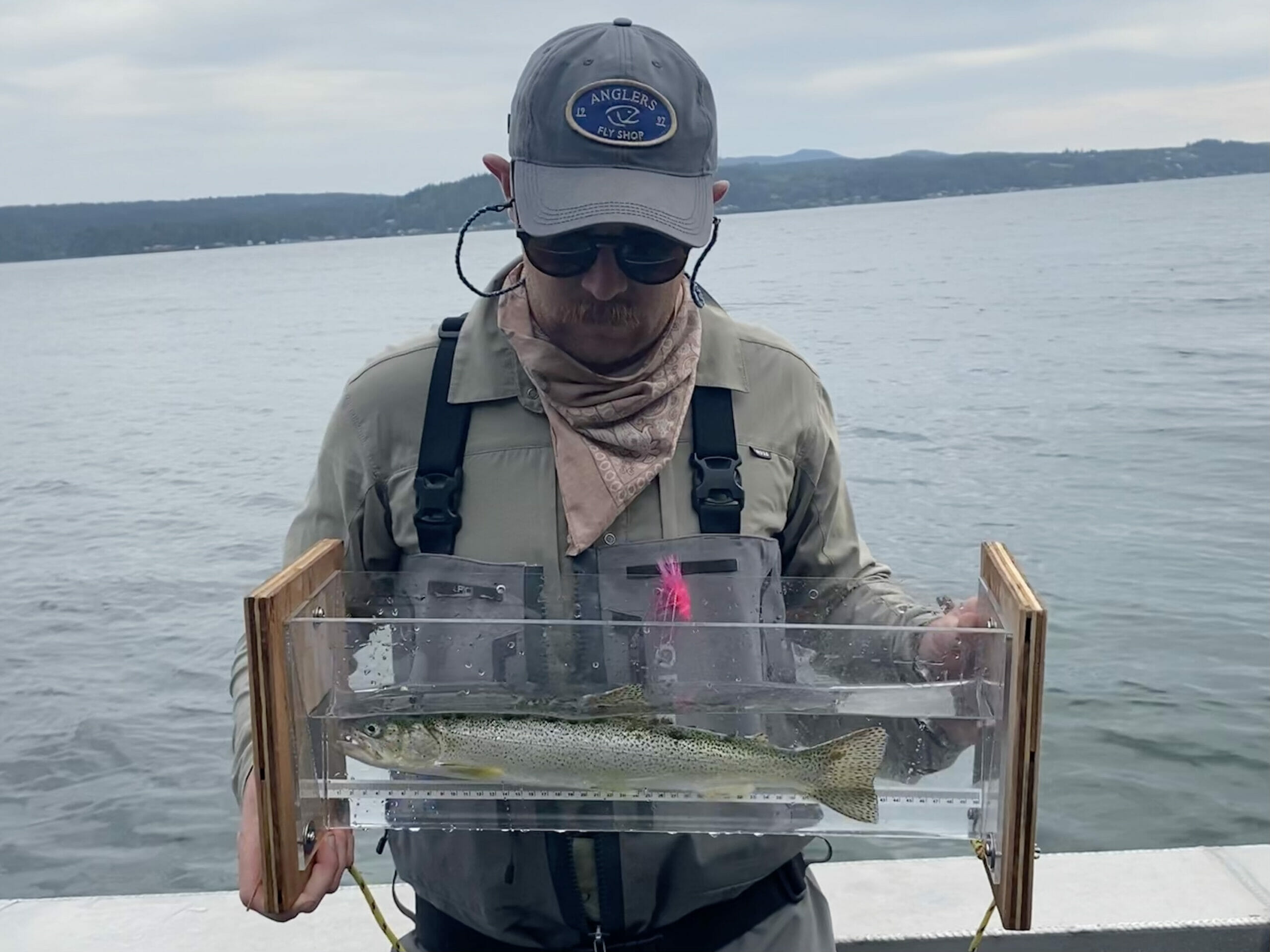Coastal cutthroat trout (Oncorhynchus clarkii clarkii)
Species summary and status: The coastal cutthroat trout (CCT) is located in watersheds from California to Prince William Sound in Alaska. However, several populations in western Oregon are thought to be at moderate risk of extinction, because of ocean conditions and habitat-related problems.
Coastals have dark green backs with olive sides and silver bellies along with numerous irregular spotting over their entire body, including below the lateral line. Resident cutthroat trout can be mistaken for rainbow trout, but they have two distinguishing features that rainbow do not: the underside of the cutthroat’s lower jaw has red slash marks on each side (the origin of its name) and small teeth on the back of the tongue. The upper jaw also extends past the back edge of the eye, where it does not in rainbow (except for rainbow over 20 inches). They average 7- to 9-inches in length. Coastal cutthroat can grow to 10- to 18-inches in good conditions.
The eastern range is generally bounded by the Cascade Mountain Range in California, Oregon, and Washington, and by the Coast Range in British Columbia and southeast Alaska. The current geographic distribution of CCT generally reflects the historic distribution since European contact. Although the freshwater form is well-distributed, the migratory forms, and in particular, marine migrants, have been the subject of concern by state and federal agencies, and local population extirpation or declines have been reported.
Unlike most other salmon species, the coastal cutthroat can spawn more than once. The life history, movement, and migration of CCT is perhaps the most complex and flexible of the Pacific salmonids. There are migratory and non-migratory forms of CCT ranging from stream residents to ocean or river migrants, lake residents, and lake migrants. Type and duration of migration depends on opportunities and the type of habitat they occupy. Full expression of these migrations and life histories requires migratory access to marine, estuarine, and freshwater habitats.
Looking forward: Generally, the limiting factors for CCT include habitat loss and habitat fragmentation, or actions that increase population isolation and loss of migration corridors, water quality and quantity, including temperature, alterations of hydrology and watershed function, and loss of estuarine habitat for rearing, ocean productivity, climate impacts (loss of coastal fog, increased fire intensity), and introduced species. Lack of resources for monitoring CCT populations and target data for monitoring has also been identified as a limiting factor. Because CCT make extensive use of river basins throughout all or a large portion of their life cycle, they are exposed to a diversity of potentially adverse conditions associated with land use activities
In general, data gaps throughout CCT range include information on the incidence of anadromous versus other life history forms, life history and ecology, abundance, distribution, population trends, age-specific survival, spawning and fecundity, migratory patterns, and habitat use, particularly in marine environments.
Monitoring population trends, improving or restoring habitat, and data-driven harvest regulations are important tools for fisheries managers. This is especially important for CCT because of lack of baseline data, such as genetic structure, and their complex migratory patterns (Losee 2016). Thus, leveraging data gathering and management actions that target a multispecies approach and partnerships is critical to the success of CCT management and conservation.
Between 2009 and 2020, the Western Native Trout Initiative contributed more than $381,676 to 17 projects benefiting coastal cutthroat trout. Project goals have been diverse – everything from genetic analysis, state and range-wide population assessments, habitat restoration and enhancement to provide spawning and rearing habitat and improved fish passage, and public education and outreach activities. Along with our partners, WNTI is in the process of conducting a range-wide assessment for coastal cutthroat trout.
As part of this effort, a web-based mapping application has been developed to support the range-wide assessment. READ MORE about the Interagency Coastal Cutthroat Committee, their meetings, projects, and the database project.
In Alaska, WNTI is assisting fund a project led by Alaska Department of Fish & Game is using an angler engagement program to document coastal cutthroat trout distribution at the western and northern portions of their Alaska range. You can read more about that project, HERE.
All Data Compiled From:
Western Native Trout Initiative



